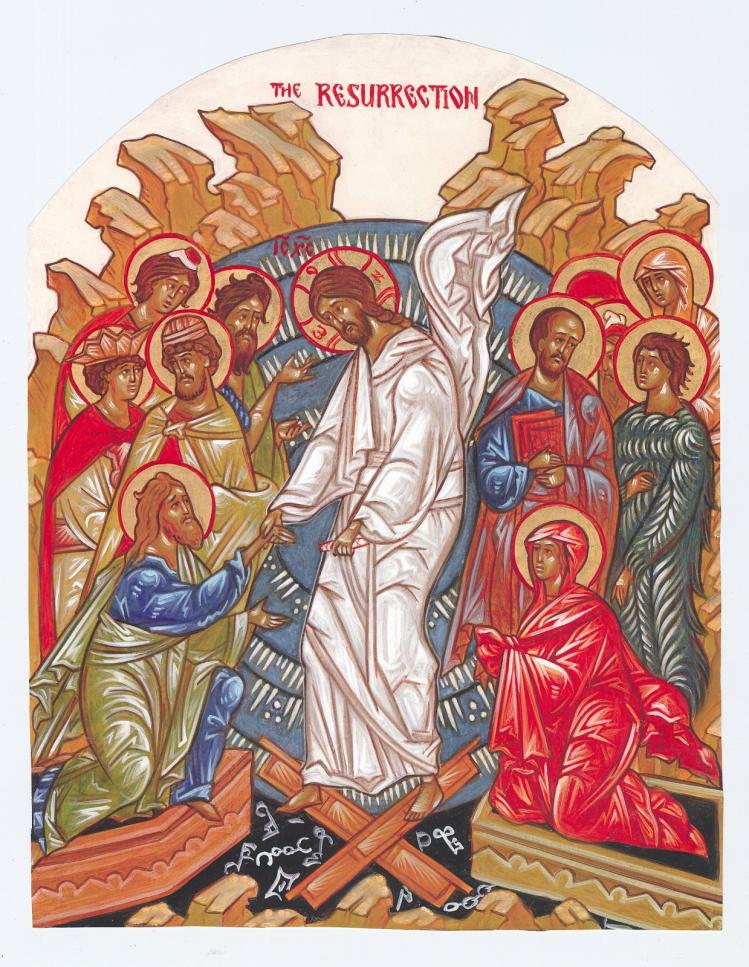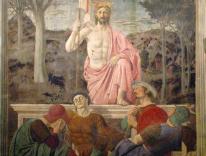
This essay was originally published in April 2014.
It’s Holy Thursday. The Paschal Triduum is about to begin this evening with the Mass of the Lord’s Supper. For Catholics these are our “high holy days,” a single celebration of the Paschal Mystery spread out over three days, the center and high point of which is the Easter Vigil.
How important is it to get to the three great Triduum liturgies? For a lot of Catholics, it’s getting harder and harder, because of work.
You have to scramble to get to the Mass of the Lord’s Supper after work on Thursday. Then a lot of employers no longer allow time off on Good Friday. And, finally, the Easter Vigil can seem daunting by comparison to the much quicker and more familiar Mass of Easter Sunday. The Triduum is not made up of convenience liturgies. There’s but one celebration of each of them. They take time. They are not an obligation.
There’s a lot to be said, however, for taking the time and making the effort to participate in these non-obligatory events. There’s a grandeur about these liturgies. They “tell the story” that stands at the core of the Christian faith. They tell it in the way that liturgy does best: through sign and symbol and with our own responses -- through prayer, petition, lament, and praise -- woven through them. We don’t watch this on a screen. We’re part of the action. Liturgy is not supposed to be a long-ago-and-far-away retelling of a sacred story, but rather a celebration of the abiding significance of these sacred events in the lives of people today.
One could write volumes about the Triduum. (It has been done.) In this blog post, however, I’d like to offer some observations about how the liturgy is constructed by way of meaning, and invite you to share your own observations.
HOLY THURSDAY
The Holy Thursday liturgy begins the Triduum with the wonderful antiphon:
We should glory in the Cross of Our Lord Jesus Christ,
in whom is our salvation, life and resurrection,
through whom we are saved and delivered.
The festive singing of the Gloria tips us off that this liturgy is not taking place as if Christ has not yet been raised. Rather, the whole paschal mystery is celebrated on each day of the Triduum. The church wears white. Bells ring. Lent is over.
The thematic focus of this liturgy is Eucharist in multiple dimensions, turning it over and over, like a jewel, to see its many facets. The institution of the Eucharist at the Last Supper is remembered. Feet are washed as a sign of the call to humble service and charity, a central Eucharistic theme from St John’s gospel. A special collection for the poor is taken up. And finally, the procession and reservation of the Eucharist are windows onto the abiding presence of Christ in the Eucharist, with his pilgrim people. The Holy Thursday liturgy does not end with “Go in peace,” because the Triduum does not end there. It resumes the next day, in silence, as the three-day celebration continues.
GOOD FRIDAY
Red is the color of Good Friday, the color of martyrs.
Although the piety surrounding Good Friday has attracted a good deal of “funeral” resonance—death and mourning—the liturgy itself has a different agenda. The choice of John’s Passion is pivotal. Jesus reigns from the cross. His hour of glory is on the cross, for it is not simply an instrument of his humiliation and suffering but the access point of life and salvation for those who believe. The solemn intercessions are prayed, so to speak, in the shadow of the cross and in the power of the risen Christ.
For many, the individual veneration of the cross is the high point of the liturgy. Yet the “showing of the cross” at three stations, as it is brought into the church, is also a powerful ritual action. The triple showing of the cross, with its acclamations, will be paralleled by the three announcements of the light of Christ, as the paschal candle is brought into the church at the Easter Vigil.
The communion service that was added at the end, in recent times, was meant to counteract the distortion of thinking that on Good Friday Jesus is “gone” in some absolute sense. It is a very simple and modest addition to the rite. The liturgy ends in silence.
THE EASTER VIGIL
The oldest annual liturgy in the church calendar, the Easter Vigil is today celebrated in four parts: light, word, baptism, and eucharist. Others have observed, rightly I think, that these correspond to the four elements: fire, air, water, and earth, and so, in a sense, the Vigil becomes an icon of the cosmos itself.
The Service of Light begins with the lighting of the new fire. From the new fire the paschal candle is lit and processed into the church, where candles of all the participants are lit, and the Easter Proclamation (the Exsultet) is sung. In the course of its long history, this part of the liturgy has gone far beyond the ancient lucernarium, or lamp lighting, which scholars speculate was the root of this opening cluster of rites. The sung and spoken texts layer onto these actions cosmic resonances and eschatological motifs drawn from the New Testament: “the Alpha and Omega” “all time belongs to him” “the morning star which never sets” and so on.
The Liturgy of the Word is generally considered the “vigiling” portion of the Easter Vigil. What are we waiting for? Augustine observed that we have no need to wait for the Lord to rise. We vigil, rather, as a sign and symbol of the Christian life itself. All of the life of faith is a vigil, he said, as we await Christ’s second coming. For one night in the year, we hold back the night as a sign of what is promised in the book of Revelation: that heavenly city in which there is no night because the Lamb is its light.
The Old Testament readings with their psalms and prayers, as many as seven, are represented in contemporary liturgical documents as telling the story of salvation. Yet the actual choices, which are generally well-rooted traditional ones, bear witness to a different organizing principle, namely a typological and mystagogical reflection on baptism. Creation, the sacrifice of Isaac, the crossing of the Red Sea, as well as the four prophetic readings, are each explicitly linked to baptism through the orations which follow them.
The Romans reading brings baptism specifically to the fore, and the gospel of the resurrection then implicitly raises the question: how is Christ rising today in our midst? The liturgy of Baptism, which follows the liturgy of the word, gives an answer to that question. The risen Christ gives life to his people. The assembly’s renewal of baptismal promises, an innovation of the reforms of Pius XII in the 1950s, has assured that, even if there is no one to baptize at the Vigil, the baptismal motif is given prominence.
The Eucharist of the Easter Vigil is the first Eucharist of Easter, and the climax of the three initiatory sacraments for the newly baptized and confirmed adults. The Masses of Easter day -- an innovation of the fifth century to accommodate overflow crowds and still playing something of the same role today -- continues to ring out the joy of the resurrection.
CONCLUSION
Liturgy is ordered, but it isn’t always tightly constructed. It’s not an argument. It’s more like poetry. It works as much through the senses of taste and touch and sight and smell as it does through hearing words or thinking thoughts or engaging in meditations. Therefore, I open this thread with an invitation to share from the fund of this rather rich and diverse sort of experience. What I’ve said above is only a very small sketch of things which seem to me significant. Your own experience of these liturgies will include other observations and insights.
Please email comments to [email protected] and join the conversation on our Facebook page.
Share
Previous Story
Trump’s Case Isn’t Unique
Next Story
The Eyes Have It
